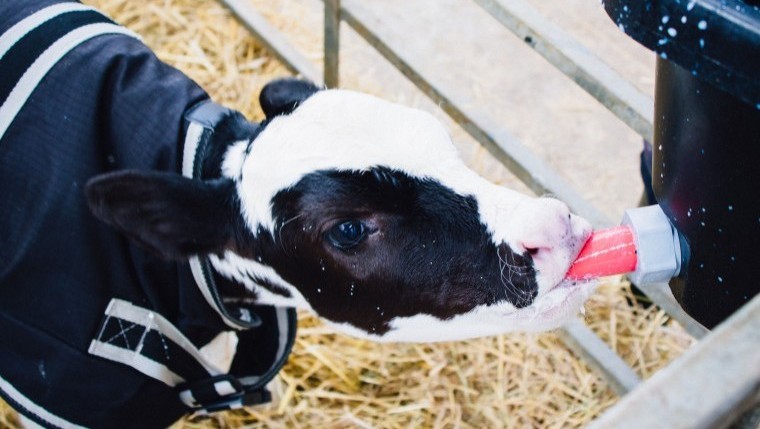New practical research, carried out by a team from the Royal Veterinary College (RVC), has found that 70% of nearly 500 pre-weaned calves on 11 dairy farms in south east England had growth rates below the recommended 0.7kg per day and of these 20% grew at less than 0.5kg per day. More than 70% of the heifers studied were pure Holsteins.
The amount of milk solids fed to individual calves on the 11 farms over their first 63 days of life ranged from 16kg to 56kg. Weaning age varied between 37 and 97 days.
The work was co-funded by the Biotechnical and Biological Sciences Research Council (BBSRC) and Volac. Research scientists hope the study findings will encourage more dairy farmers to feed calves more milk during the pre-weaned phase and to monitor growth rates more closely.
According to Professor Claire Wathes, who led the RVC study team, the amount of milk offered correlated positively with growth. “To achieve the recommended growth rate of at least 0.7kg per day, calves need at least 750g of milk powder per day. They should also be offered calf starter ad lib, together with forage and clean water. This improves animal health, as well as growth, and sets them up to calve for the first time by the optimum two years of age,” she said.
Dr Jessica Cooke, research scientist with Volac, pointed out that the calf experiences significant health and environmental stresses during the first two weeks of life and that feeding more milk from a few days of age is important for lifetime productivity.
“During the first few weeks of life, calves are unable to eat enough dry feed to meet their energy requirements and are almost entirely dependent on their milk feed,” she said.
“Early growth restriction can affect the long-term performance of the adult cow. As expected, the heifer calves offered more milk in the RVC study were found to have better growth rates up to 63 days of age. But this research also highlights the growth benefits long after weaning of providing a good milk supply in early life. Those fed more were heavier and taller at seven months of age.
As a result of this work and other studies, Volac has recently refined its milk feeding recommendations. The result is a ‘best- practice’ feed plan to achieve optimum results.
“As a guide, calves should be fed five litres per day following the colostrum period, increasing to a minimum of six litres per day from day eight through to 35 days of age. Milk replacer levels should then be gradually reduced over a three-week period before weaning at day 56 (see table). After three weeks, the rumen should have enough bacteria fermenting enough solid feed to supply substantial amounts of energy, ensuring no growth setbacks around weaning,” Dr Cooke said.
Recommended milk feeding plan, with a three-week weaning period, for calves fed twice daily:
| Week | Age (days) | Twice daily feeding rates (litres)* | |
|---|---|---|---|
| am | pm | ||
| 1 | 0-3 | Colostrum | Colostrum |
| 4-7 | 2.5 | 2.5 | 2 | 8-14 | 3 | 3 | 3 | 15-21 | 3 | 3 | 4 | 22-28 | 3 | 3 | 5 | 29-35 | 3 | 3 | 6 | 36-42 | 2.5 | 2.5 | 7 | 43-49 | 2.5 | 2.5 | 8 | 50-56 | 2.5 | 0 | 9 | 57 | 0 |
*Milk replacer mixed at either 12.5% or 15%.




